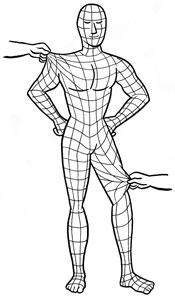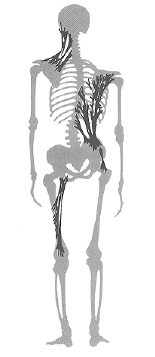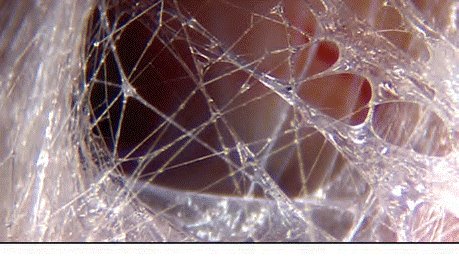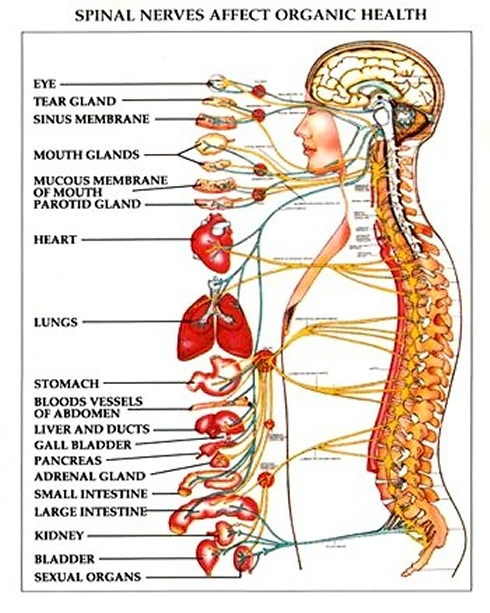I have studied Dr. John Upleder’s Cranio Sacral Therapy, John Barnes’ Myofascial Therapy, Dr. Jean-Pierre Barral’s Visceral Manipulation, Vodder Technique, and Michael Foldi Academy of Lymphatic Studies. I have also studied many other types of therapies, but I usually use them in combination with these techniques.
2. Myofascial Therapy
Myofascial Release is a very effective hands-on technique that provides sustained pressure into myofascial restrictions to eliminate pain and restore motion. The theory of Myofascial Release requires an understanding of the fascial system (or connective tissue). The fascia is a specialized body system that looks similar to a spider’s web or a sweater. Fascia is very densely woven, covering and interpenetrating every muscle, bone, nerve, artery, vein, and all of our internal organs, including the heart, lungs, brain, and spinal cord. The most interesting aspect of the fascial system is that it is not just a system of separate coverings. It is actually one structure that exists from head to foot without interruption. In this way, you can see that each part of the body is connected to every other part by the fascia, like the yarn in a sweater. In the normal healthy state, the fascia is relaxed and wavy in configuration. It has the ability to stretch and move without restriction. However, when we experience physical trauma, scarring, or inflammation, the fascia loses its pliability. It becomes tight and restricted and is a source of tension for the rest of the body. Trauma, such as a fall, whiplash, surgery, or just habitual poor posture over time and repetitive stress injuries have cumulative effects. The changes they cause in the fascial system influence comfort and the functioning of our body. The fascia can exert excessive pressure, producing pain or restriction of motion. They affect our flexibility and stability and determine our ability to withstand stress and strain. The use of Myofascial Release allows us to look at each patient as a unique individual. Our one-on-one therapy sessions are hands-on treatments during which our therapists use many Myofascial Release techniques and movement therapy. We promote independence through proper body mechanics and movement education, enhancing strength, flexibility, and postural and movement awareness.
3. Visceral Manipulation
The visceral system relies on the interconnected synchronicity between the motions of all the organs and structures of the body. At optimal health, this harmonious relationship remains stable despite the body’s endless variety of motion. But when one organ cannot move harmoniously with its viscera due to abnormal tone, adhesions, or displacement, it works against the body’s other organs and muscular, membranous, fascial, and osseous structures. This disharmony creates fixed, abnormal points of tension that the body is forced to move around. And that chronic irritation, in turn, paves the way for postural distortion, neuromuscular dysfunction, and disease processes. Visceral Manipulation relies on palpating normal and abnormal forces within the body. Therapists can use specific techniques to evaluate how abnormal forces interplay, overlap, and affect the normal body forces at work. The goal is to help the body’s normal forces remove abnormal effects, whatever their sources. Those effects can be global, encompassing many areas of bodily function.
4. Certified Lymphatic Therapist
Manual Lymph Drainage (MLD) is a specialized massage technique that uses gentle, precise strokes to stimulate lymphatic flow and promote the release of fluid that builds up in the body, called edema. Edema is swelling that occurs when interstitial fluids build up in various compartments in the body. It can help relieve symptoms of lymphedema. The fluid in the lymphatic system helps remove waste and toxins from body tissues. Some health conditions can cause lymph fluid to build up. Lymphatic drainage massages may benefit people with lymphedema, fibromyalgia, post-surgical procedures, radiation, cancer, or other conditions.




